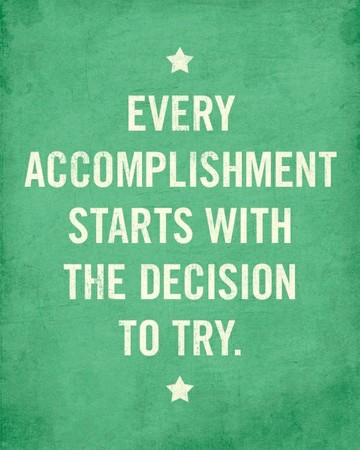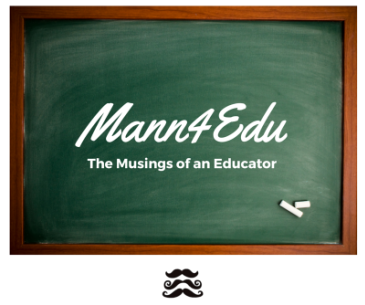|
Since the fall of 2014 I have been fortunate enough to be a part of an ongoing conversation about public education in Texas related to innovation and transformation. That fall I was introduced to the principals' vision institute program run by N2Learning. As a part of the institute we discuss the 'Visioning Document' that was created by a group of Texas Superintendents in 2006 with the creation of the public education visioning institute. Being a part of a conversation at this level with principals, superintendents, and education thought leaders from across the state and country (guest speakers) has caused a mind-shift affect on the principals that are a part of each cohort. I have been no exception. The conversations and the thought processes that come from my experience and discussions about what could be in education are very exciting to me. I began to think about what could be in public education. I began to think about what could be in my own school.  On Tuesday March 22 a conversation was started in the library. Participation in the conversation was completely voluntary but open to all faculty and staff of AMCMS. The purpose of this type of a conversation is to open up the ideas as to what is possible in education. This entire conversation began with one simple question, "If you could change one thing about education what would you change?" The discussion was lively, open, honest, and real. The visioning document was not discussed in great detail as part of this conversation (that will come in time) but the ideas about what is possible was outstanding. It was wonderful to see educators talking about real issues, real concerns, real hopes, real dreams, and real desires for students and student learning. I cannot wait for more of these conversations because the more that we talk about these issues centered about what could be in schools the more likely we are to make actual changes that will transform the learning for our students. No matter your role in education I urge you to seek out opportunities to share your hopes and dreams... your visions... of what could be in education for our students. "If you could change one thing about education what would you change?" You do not have to go through a process such as the vision institute to start your thinking about what could be. You just need to find other like minded educators in your school and district and start taking about what could be. Identify your obstacles and then talk about what you can do to overcome those obstacles.
As you begin to think about the possibilities and begin conversations about the possibilities with others you will find there are many things that you can begin today within the current constraints within public education and make real changes for your students. If you are passionate about doing what is best for kids then you need to develop a vision for your classroom and your school that is centered around doing what is best for kids. Read the visioning document. Become inspired. Become excited about the possibilities. Start a conversation! Think. Achieve. Succeed. Jeff
0 Comments
Each week I send a weekly message to my school staff of outstanding professionals. The purpose of my weekly message is not only to share a calendar of events with the staff but more importantly to push their thinking about what we are doing in schools. Often in my ongoing conversation with my staff I will discuss creativity because I feel that creativity in schools is vital to our students' success as adults. Take about 2 minutes to watch the above video I came across this afternoon. As you watch the video you will see that there is one important question at the end of the video. Are you ready... "How do we stay that way?" You have to watch the video to understand the context. Being a principal I do not think that schools intentionally beat the creativity out of kids but I do think that the "fear of being wrong" does scare the creativity out of most of us. As a society we have created an education system that is built upon a GPA race because as humans we have an insatiable need to measure ourselves against everyone and everything. Sir Ken Robinson argues that the system is set up to kill creativity and he is correct. It isn't intentional, but it is a sad outcome. We must be the best and compare ourselves against those that we believe are the best. When we feel we are not the best, we have failed, we often give up and begin to think we are not capable. We are not creative. This same mentality spills over into life in general. We have the top _________ (fill in the blank) in almost every aspect of life. We have rankings for almost everything in life. I challenge you to find major life events that are not associated with a ranking of some sort. We are afraid to let our creativity loose because others will judge it, rank it, and tell us all the reasons why they think we are wrong in our creative interpretations and learning. Think about that for a minute. Do you like to be wrong? Doubtful. Do you learn from being wrong? Definitely. Why? Because you did not like being wrong you most likely went back to learn from the mistake. In the end isn't that the point? Learning? That is what it is all about right? So as school leaders...principals, teachers, directors, superintendents, parents... how do we overcome this fear of failure within students? How do we overcome this fear of being wrong within our students? How do we inspire creativity within our students to a level that even though they may be wrong and make mistakes they are still successful and still learning? Are we going to be able to do away with the GPA race? Not anytime soon because it is too ingrained in the educational culture. Can we just stop assigning grades? Not without a huge re-education of society and parents. These are entire system approaches. So what can we do? We focus on what we can change starting today. As district and campus leaders we can promote creativity by providing teachers permission to fail. Now, this does not do any good if we are right there when they fail and instead of cheering them on, supporting them, and encouraging them to take a risk we write them up because it did not turn out as planned.
Creativity in schools begins with school leadership, period. As leaders we must be willing to take a chance ourselves. We need to be willing to take a chance with students and teachers and see what happens. We may fall flat on our face and we will learn. We may soar to new heights because we took a chance and we will also learn. Either way, we are modeling what we need from our teachers and students. My risk-taking with students will become apparent as a "success" or "failure" in a couple of weeks and I cannot wait to share the results. No matter the results, I am doing what I expect from my staff. I am taking a chance and encouraging students to put themselves out there with their ideas to change the world. I will let you know how it all turns out. What are you modeling as a school leader? Think. Achieve. Succeed. Jeff |
Jeff MannA lifelong learner that is committed to asking questions to seek greater understandings. Do what you can, with what you have, where you are Archives
January 2023
Images & Quotes that Inspire |









 RSS Feed
RSS Feed
